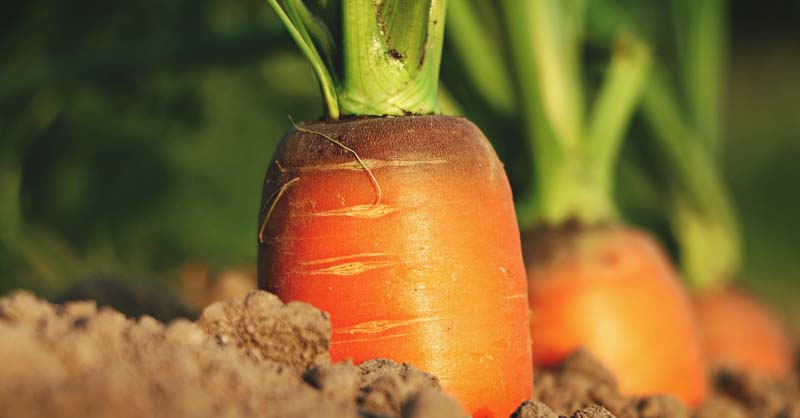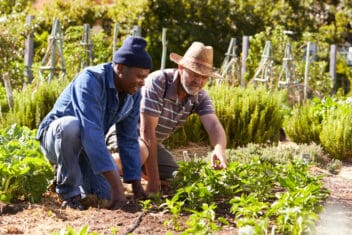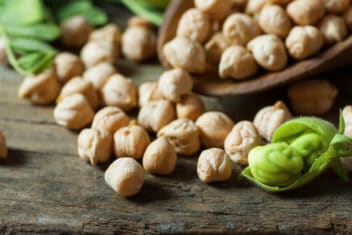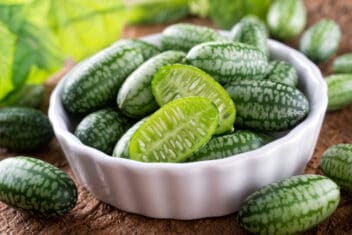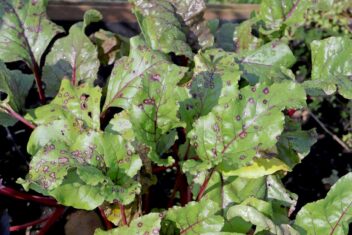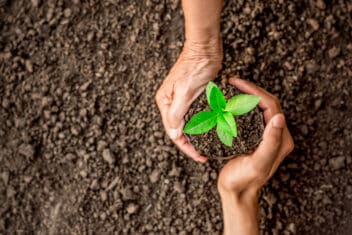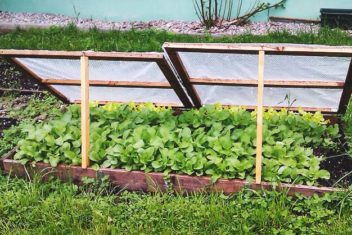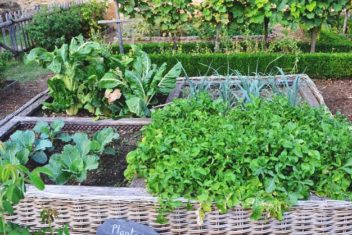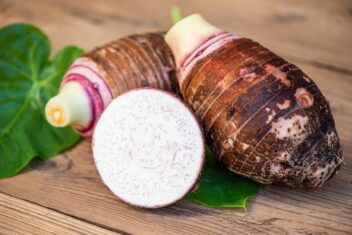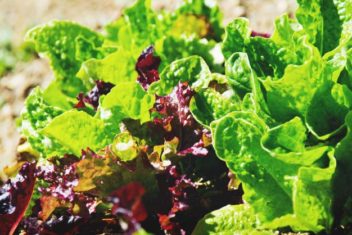Are you ready for July? It’s going to be hot, hot, hot! It seems no matter what part of the United States you live in; it’s time to prepare for the extreme heat.
But are you feeling unsure of what you’re supposed to be doing around your garden this month? Well, don’t worry because you’ve come to the right place.
I’m going to break down gardening chores for you by zone and region. Why do both?
If you’re like me and live on the border of two planting zones, it’s a good idea to cross-reference what you should be doing based on planting zone as well as region.
Here’s all you need to know to stay on top of your garden this July:
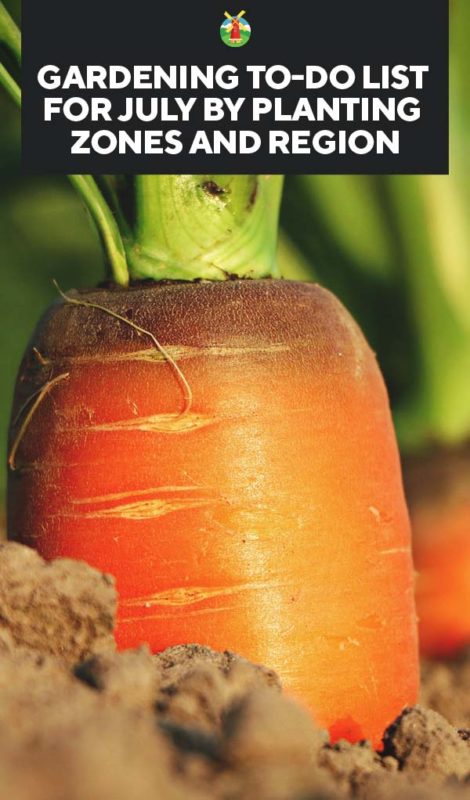
July Garden Chores by Planting Zone
Zone Three
In zone three there are a variety of chores you should be doing to help your plants make it through a hotter month. Follow these tips, and your plants should prosper:
1. Hill Potatoes and Carrots
Hilling your potatoes and carrots are important. Hilling means to pull dirt up around the plants to keep the vegetables growing beneath the ground fully covered.
Hilling helps to keep the plants productive and healthy while they finish producing. A garden hoe is the best tool to use to perform this task.
2. Stake Plants
Staking tall plants is crucial. If you don’t stake them, the stems could break and the produce could fall on the ground.
Also, plants growing on the ground are more susceptible to disease and it makes harvesting difficult. You can either tie the plants to stakes in the ground or try the Florida Weave method.
3. Water
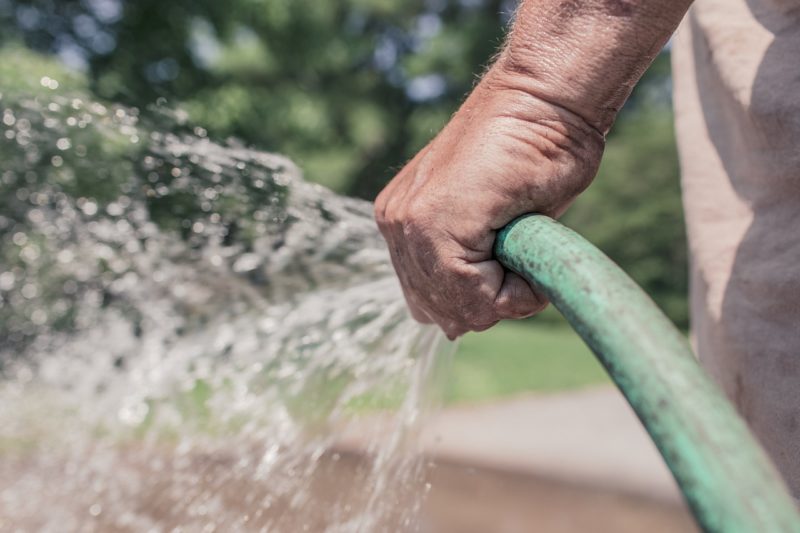
During the hotter months of the year, water is vital. It’s important to try and water your plants deeply instead of watering them more frequently with less depth.
Also, any time you receive less than an inch of rain per week, be sure to water more frequently during those times to ensure your plants are receiving the water they need.
4. Mulch
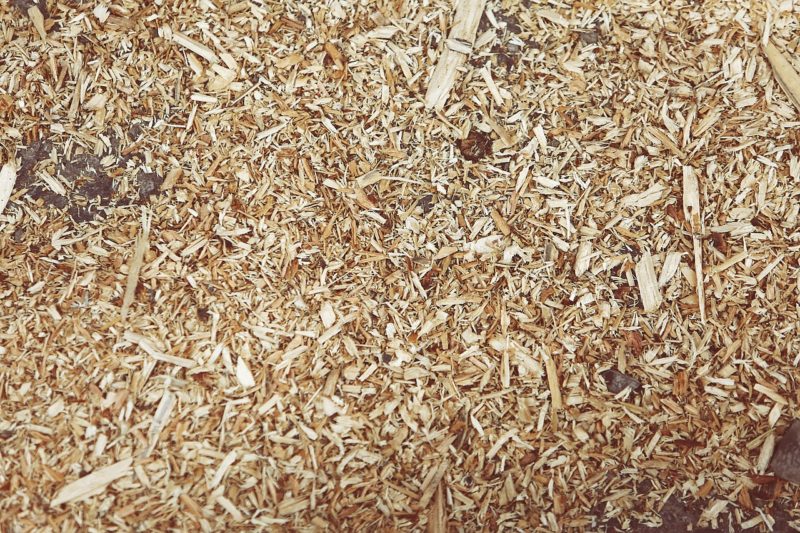
Mulch is your friend during hot months. It’s important to mulch around plants to help retain the moisture they receive from either Mother Nature or from the water you apply.
Zone Four
1. Second Plantings
In zone four, July is the perfect month to grow a second planting of green beans and squash. If you’re someone who enjoys canning, this could mean more jars of green beans for your pantry.
However, canning squash isn’t safe. Therefore, you’ll have to find a different method of preserving it. I prefer to freeze my squash for later use.
2. Battle the Bugs
Bugs are a fact of life in your garden. July seems to be the month which draws many to the surface. Keep in mind; there are beneficial insects in your garden too.
However, if you notice your garden is munched on by insects, you’ll need to take action to protect it.
3. Mulch
Mulching is going to a be a big thing this month in almost every planting zone. The reason being, mulch helps to retain moisture.
During hot months when many places are facing drought, the mulch can help hold in moisture and prolong the need for water.
4. Transplant
In zone four you can begin to prepare for your fall garden by transplanting broccoli, cabbage, and cauliflower.
5. Sow
You can also prepare for your fall garden by sowing kale for a fall harvest as well. July is a great time to add perennials to your garden as well.
Zone Five
1. Succession Plant
If you live in planting zone five, you should succession plant both dill and cilantro. This will give you a constant harvest instead of having one large crop.
Also, it is a good idea because it helps to keep the gardener from feeling overwhelmed. Plus, it helps you to be able to use what you plant and not have to worry about anything going to waste.
2. Plant Peas
Peas are an excellent crop for the fall. In zone five you can go ahead and plant peas to enjoy for a fall harvest. They’re not difficult to grow and taste amazing.
3. Harvest
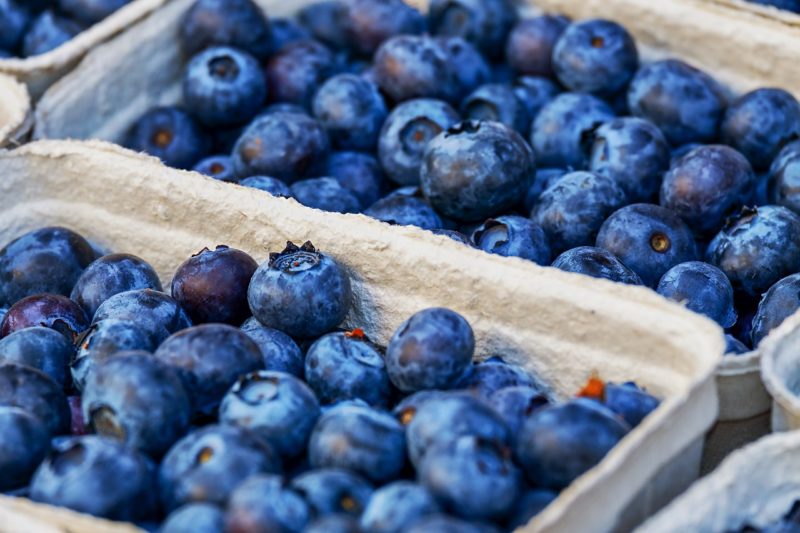
Your garden should be booming this month. It’s important to harvest it regularly to keep your garden producing.
Keep in mind; it’s best to harvest your garden in the morning hours while it’s still cool outside. This is certainly a safer option for the gardener and helps to avoid some of the extreme temperatures July can bring.
Zone Six
1. Harvest
You’ll need to harvest your garden regularly during July to encourage production. If possible, try to harvest your garden in the morning hours for safety purposes.
2. Second Planting
July is a perfect time to plant a second planting of green beans and squash in zone six. Again, if you’re an avid canner, this could be a great way to produce a few extra green beans to go in jars for the winter.
Remember, squash isn’t a good candidate for canning. Be sure to research your alternative preservation methods.
3. Sow
In zone six you should be planting carrots, kale, beets, chard, and peas for a fall harvest. This should help to give you a jump start on a fall garden and hopefully a nice harvest too.
4. Prune
Finally, you should prune your blackberries and raspberries during July for this zone. As the berries finish up, you’ll notice the old canes shining through.
July is a good time to cut those canes out and give your berries a greater chance of production for the next year.
Zone Seven
1. Prune
July is a great month to prune your berry plants. As the berries finish up, cut out any old canes from blackberry or raspberry plants.
If you see any sickly parts of the plants, it’s a good idea to prune those parts as well. This should give your plants a higher chance of production in the following year.
2. Harvest Potatoes
When July hits, it’s time to begin harvesting potatoes. You’ll notice the tops of the potato plants will turn brown and fall over.
When this happens, you can dig up the potatoes. Save the larger potatoes to reseed and keep the smaller potatoes to eat.
3. Sow
In zone seven, you should sow collards and carrots for your fall garden. The seeds are tiny and can be difficult to space evenly.
Don’t worry about proper spacing at this point. As the carrots come up, you can pull up the plants which are too close together.
4. Manage Weeds
Weeds can become a problem during July. It’s important to stay on top of them, or they’ll take over your garden.
There are many different weed control techniques. Find the ones which work best for you and stay on them.
5. Canning
If you’re an avid canner, this month will be one of your busiest months. The reason being, most of the vegetables in your garden will be ready for harvest this month.
Go ahead and prepare yourself for long days of cooking and tired feet. Also, keep in mind how great all this effort will taste during the winter months.
6. Harvest Your Garden
Finally, be sure to harvest your garden regularly this month. The more you collect, the more it encourages your garden to produce even more.
Also, make sure you familiarize yourself with proper storage techniques as well. This way you won’t lose anything your harvest.
Zone Eight
1. Transplant Vegetables for Fall Garden
July is the perfect time to transplant tomato, pepper, and eggplants into your garden space. It will give you a nice headstart to your fall garden.
2. Get Ready for Halloween
If you’d like to have pumpkins for Halloween, you should start now. July is when you sow pumpkin seeds in your garden to have a fall harvest.
3. Clean Up
In zone eight, you should begin cleaning up your garden in July. Remove any dead or diseased plants from the garden to protect the plants still growing, and to deter any diseases from setting up shop in your soil.
4. Mulch
Mulching is an important task during July. It’s such a hot month anything you can do to help your plants is a bonus. Be sure to mulch around your plants to hold in moisture and also mulch around your perennial plants now too.
5. Manage Compost
The final task for July in zone eight is to be sure to manage your compost. Give it a good turn and help it finish breaking down. You will soon need to begin using it towards your fall garden.
Zone Nine
1. Protect Your Fruit
July is a month when many fruits will produce in large quantities. As much as we know this, the birds do as well. Be sure to put nets over your fruit trees to protect the harvest.
2. Spread Compost
In zone nine, you’ll begin prepping for your fall garden. July is a great time to spread compost over areas you are planning on utilizing for a fall garden.
3. Give Shade
The higher in the zones we climb, the hotter the temperatures in most cases. Zone nine is hot in July, and you should do what you can to provide partial shade for your peppers, tomatoes, eggplants, and lettuce to help them avoid scalding from the sun.
Zone Ten
1. Start Seeds
July is the perfect time to start your seeds for okra, collards, tomatoes, peas, and eggplant. You’ll be ready to transplant them in a month or two to have a delicious fall harvest.
2. Fertilize
When it gets hot, your plants will sometimes need a boost. July is a great time to give it to them. Any veggies or flowers which look in need of some help, fertilize them this month.
3. Harvest
In zone ten, July is most likely going to be a hot month. Therefore, any vegetable or fruit you’re producing which is heat sensitive should be harvested now. This will ensure you get to keep your harvest instead of losing it to too much sun.
4. Get Started Early
Because of the extreme heat which comes along with July, it’s a good idea to make sure you start working outside early. Try to work outdoors in the early morning hours, drink plenty of water, and take breaks when you need them.
Gardening Task by Region
As much as you need to know what to do by your planting zone, it’s a good idea to cross-reference what you should be doing by region as well. Here’s what you need to know:
Northwest
- Water your garden in the morning
- Mulch to retain moisture
- Stake the taller plants which need it
- Plant beets, bush beans, carrots, broccoli, lettuce, peas, kale, and cauliflower for a fall harvest
- Plant potatoes
- Put compost around your rhubarb and asparagus plants. Be sure to water them thoroughly after application
- Battle the bugs which will show up in your garden this month
- Deadhead any flowers which are fading in appearance
- Stay on top of the weeds
- Do what you can to keep tomatoes healthy in the heat: ample water, mulching, and prune as needed
Southwest
- Do your gardening in the morning hours
- Harvest garlic and onion when the tops have flopped over
- Give plants sufficient amount of water
- Mulch plants to retain moisture
- Harvest your garden regularly to encourage production
- Transplant tomatoes, eggplants, and peppers for your fall garden
- Sow seeds for pumpkins, squash, and lima beans for a fall harvest
- Dig up any bulbs which bloom in the spring and have become overcrowded; move them for adequate spacing
- Deadhead fading flowers
- Give container gardens extra water since they don’t retain water like regular gardens
Midwest
- Harvest your garden regularly to encourage production
- Keep an eye out for summer squash to ensure you harvest while still at a tender stage
- Fertilize tomatoes and peppers
- Water plants regularly and early in the morning when possible to help retain moisture and stop water loss
- Battle the bugs which will most likely appear in your garden this month
- Cover fruit trees with nets to protect your harvest
- Stake taller plants
- Succession plant corn and beans
- Stay on top of the weeds in your garden
Northeast
- Sow bush beans for a fall garden
- Sucker melon plants after approximately four fruits have set on the vine
- Harvest summer squash, tomatoes, beans, zucchini, and any other crops which are ready
- Sow seeds for carrots, beets, turnips, collards, kale, summer squash, and radishes for a fall garden
- Transplant broccoli, cauliflower, and cabbage for the fall garden
- Mulch to help retain moisture
- If it rains less than one inch of rain during the week, plan on watering extra
- Harvest garlic and onions when their tops have flopped over
- Spread out overcrowded dormant spring bulbs
Southeast
- Begin preparing for your fall garden
- July is your final chance to plant okra, corn, pole beans, and lima beans
- Harvest garden regularly to encourage production
- Mulch to help retain moisture
- Water garden thoroughly and earlier in the day to keep water from evaporating
- Deadhead fading flowers
- Plant pumpkins for fall harvest
- Clean the garden and get rid of any dead or sickly plants
- Water container gardens more frequently than usual because of high heat
Now you know what you should be doing around your garden in July based on your planting zone and your region. This should give you a good idea of what you need to focus on, based on where you are living.
Hopefully, these tips will help you to have a bountiful harvest, beautiful flowers, and a healthy garden in the fall.
